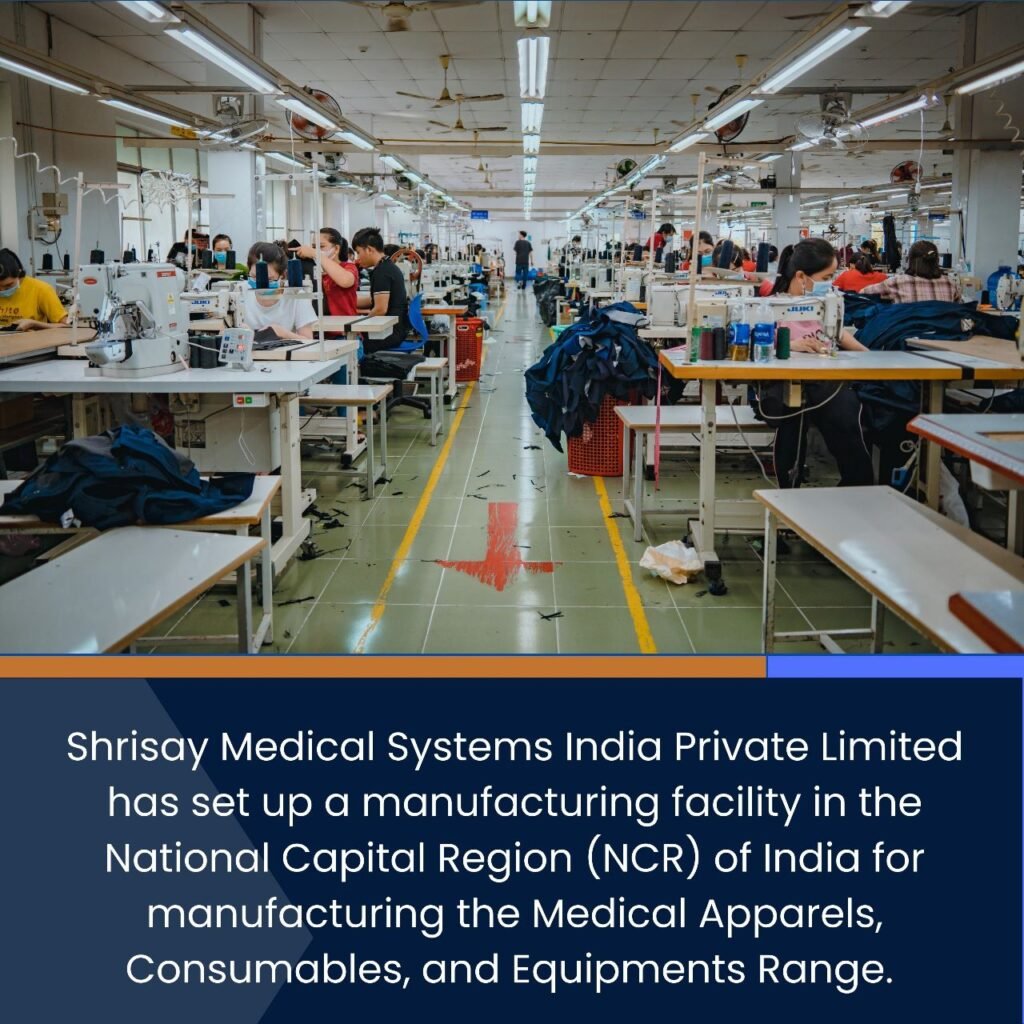



Shrisay Medical Systems India Pvt Ltd
Leading Manufacturer of Surgical Dresses
- Client Shrisay Medical Syatems
- Date 25 June 2021

In today’s rapidly advancing healthcare industry, the demand for high-quality surgical drapes and gowns is increasing. Setting up a manufacturing unit for surgical drapes and gowns can be a lucrative business opportunity for aspiring entrepreneurs. This portfolio aims to provide an overview of the key components involved in establishing and operating a successful manufacturing unit for surgical drapes and gowns.
- Market Analysis: Conduct thorough market research to understand the demand, competition, and potential customer base for surgical drapes and gowns. Consider regional healthcare facilities, surgical procedure volumes, and regulatory requirements. Identify target markets and potential customers, including hospitals, surgical centres, and medical distributors.
- Business Plan: Develop a comprehensive business plan that outlines your manufacturing unit’s objectives, strategies, and financial projections. Include details on the manufacturing process, raw material sourcing, production capacity, pricing strategies, and sales and marketing approaches. Seek professional assistance, if necessary, to ensure the plan is well-structured and feasible.
- Regulatory Compliance: Familiarize yourself with the regulatory requirements for manufacturing surgical drapes and gowns in your target market. Adhere to quality control standards, such as ISO 13485 or FDA guidelines, to ensure the safety and effectiveness of your products. Obtain necessary licenses and certifications to operate legally and gain the trust of potential customers.
- Facility and Equipment: Identify a suitable location for your manufacturing unit, considering factors like proximity to transportation hubs, availability of skilled labour, and access to utilities. Set up a facility that meets Good Manufacturing Practice (GMP) standards, including cleanrooms, sterilization areas, and storage spaces. Invest in advanced equipment for cutting, sewing, and assembling surgical drapes and gowns, while maintaining efficiency and product quality.
- Supply Chain Management: Establish a reliable supply chain for sourcing high-quality raw materials, such as non-woven fabrics, threads, elastic bands, and packaging materials. Develop strong relationships with suppliers to ensure consistent and timely delivery of materials. Implement inventory management systems to optimize stock levels and minimize production disruptions.
- Production Process: Design an efficient production process that includes material cutting, sewing, assembly, and packaging. Optimize workflow to maximize productivity while maintaining stringent quality control measures. Train and empower your workforce with the necessary skills to operate machinery and follow standardized procedures. Regularly monitor and evaluate the production process to identify areas for improvement.
- Quality Control: Implement a rigorous quality control system to ensure the manufactured surgical drapes and gowns meet industry standards and customer expectations. Conduct regular quality checks at various stages of production, including raw materials, intermediate products, and finished goods. Invest in testing equipment to evaluate product strength, barrier properties, and conformity to relevant standards.
- Sales and Distribution: Develop a robust sales and distribution strategy to reach potential customers effectively. Establish relationships with healthcare facilities, surgeons, and purchasing departments to promote your products. Consider participating in trade shows, conferences, and industry events to showcase your manufacturing capabilities. Collaborate with medical distributors and create an online presence to expand your market reach.
- After-Sales Support: Provide excellent after-sales support to build customer loyalty and maintain long-term relationships. Offer prompt and efficient customer service, address complaints or concerns promptly, and provide product training and technical assistance as needed. Continuously engage with customers to gather feedback and implement improvements based on their suggestions.
- Scalability and Future Expansion: Plan for scalability and future expansion by forecasting demand, upgrading equipment, and investing in research and development for innovative product offerings. Stay updated with emerging trends in surgical drapes and gowns to remain competitive in the market. If feasible, consider diversification into related product lines or expanding into international markets.
Setting up a manufacturing unit for surgical drapes and gowns requires careful planning, adherence to regulatory requirements, and a commitment to producing high-quality products. By following the steps outlined in this portfolio, you can lay a solid foundation for a successful and profitable venture in the healthcare industry. Continuous improvement, market awareness, and customer satisfaction are key to achieving long-term success in this dynamic and essential field.
